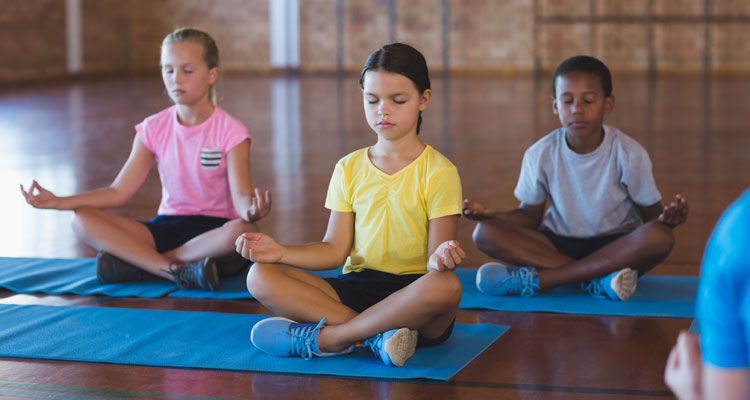When you think of meditation, what comes to mind? Is it sitting in a yoga pose while humming a soft chant? Is it simply closing your eyes and concentrating (and hoping not to go to sleep!)? Is it a prayerful, religious experience for you?
No matter how you view meditation and what it means to you personally, the fact is that many schools are incorporating meditation into their classrooms, teaching philosophies, and disciplinary programs.
Perhaps you have seen articles talking about schools choosing to replace detention with meditation or meditation being used as behavioral therapy in classrooms. What are your thoughts on this? Do you think meditation belongs in schools?
Before answering, consider these questions to better know how meditation may or may not be what’s best for your student. Here’s what you need to know.
What is the difference between meditation and mindfulness?
In the context of speaking about meditation in schools, “mindfulness” is a more accurate term to describe the tool being implemented by educators. Mindfulness can be distinguished from the Hindu-based practice of meditation by looking at the basic goal of both. Mindfulness focuses on “zoning in,” while meditation focuses on “zoning out.”
With meditation more rooted in spirituality, mindfulness instead serves as a more secularized state of raised consciousness—living in the here and now in a state of heightened awareness of decisions, relationships, and behaviors.
How common is it?
Mindful Schools is one of many organizations committed to helping inform educators about the benefits and research related to mindfulness. According to their website, they have a network of educators in all fifty states and have trained more than 14,000 teachers, administrators, mental health professionals, and school community members. Their reach has impacted more than 750,000 students worldwide.
The U.S. Marine Corps has experimented with implementing “Mindfulness-Based Mind Fitness Training” as a part of their training exercises. The goal is to use mindfulness as a tool to reduce stress.
A program that has received a lot of media attention is the Holistic Me after-school initiative at Robert W. Coleman Elementary School in Baltimore, Maryland. Approximately 120 students are learning yoga, mindfulness, meditation, centering, breathing exercises, and many other life skills related to interconnectedness.
The Holistic Life Foundation, of which Holistic Me is a part, reports that it serves more than fourteen schools in the Baltimore area and approximately 4,500 students every week.
What are the concerns?
Many parents are concerned about the perceived religious aspects of meditation or mindfulness. Since many believe that religion and spirituality should not be taught in schools, meditation teeters on the edge of getting into controversial areas.
Others may be concerned about the replacement of traditional discipline and classroom protocols with mindfulness. Parents may prefer that their child receive detention or a trip to the principal’s office instead of becoming a part of a meditation ritual or mindfulness training in the classroom.
What are the benefits?
In a trial study, an elementary school in Richmond, California, incorporated a mindfulness-based curriculum in the classroom. Students took part in this training for five weeks with their behavior tracked pre- and post-course. At the end of the mindfulness training, teachers reported that students improved in all areas—paying attention, self-control, participation, and respect for others. As this study indicates, a mindfulness program has the potential to result in marked improvement in student behaviors.
What should I do if I object to this?
The majority of Mindful Awareness Practices (MAPs) being introduced to schools across the country are rooted in secular ethical frameworks and are not intended to be religious or spiritual in nature. However, if for any reason you have concerns or objections to your child’s participation in meditation or mindfulness, let your voice be heard.
Teachers prefer a parent who overly communicates, as opposed to under-communicates, so schedule a meeting and talk with them about your perspective and opposition. Ask to attend a session where mindfulness is being taught so you can see for yourself exactly what is occurring.
Also be sure to speak with your children about self-awareness and any behavioral concerns. Patiently answer any questions they may have, and let them know your family’s beliefs on certain topics related to what they may be learning at school.
If your child’s existing learning environment does not seem to be the best fit for your child’s needs, and you feel it may be time to change schools, consider online learning as an option to have more opportunities to personally supervise your child’s behavior and learning experiences.
Have you had any experience with meditation being taught in school? Do you have concerns, or do you feel it is beneficial for your child? Let’s discuss!




































